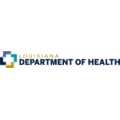The Benefits of Preventive Maintenance Scheduling Software
A preventive maintenance schedule forms the foundation of effective equipment care. Modern preventive maintenance systems and preventative maintenance software streamline operations through automated scheduling and task management. A well-implemented preventive maintenance plan helps organizations reduce downtime while optimizing resources.
Using preventive maintenance scheduling software and equipment preventive maintenance software, teams can automate tasks and track maintenance activities effectively. Planned preventive maintenance transforms equipment care through robust preventive maintenance management capabilities, while planned preventative maintenance software enables comprehensive program monitoring and coordination.
The Difference Between Preventive Maintenance and Predictive Maintenance
Preventive Maintenance tasks are completed based on a recurring time schedule or a given amount of usage or cycles. A planned and scheduled maintenance routine is put in place to extend the life of assets and reduce downtime. The maintenance is performed on predetermined assumptions, based on manufacturers’ recommendations or history.
Predictive Maintenance monitors the performance and condition of equipment during normal production operations. This feature uses data analysis tools and methods to detect anomalies in your operation and possible defects in equipment and processes so you can fix them before they result in failure. Predictive Maintenance estimates the exact moment of a failure, and repairs can be scheduled when necessary. This is a cost-effective approach with minimal impact on production.
Real Results – From Real Users
Explore Additional Testimonials & Case Studies
Why Do You Need Preventive Maintenance?
Because preventive maintenance establishes the groundwork for effective facility management, preventive maintenance is crucial. Preventive maintenance keeps your assets and equipment in top condition, ensures employee safety, and helps in preventing major expensive repairs in the future. Without preventive maintenance management, there can be significant delays in products and services, disruption to business operations, and an increase in expenses. Maintenance management helps companies organize and manage time and costs, to ensure the efficiency of processes and procedures while maintaining resources and controlling costs.
Types of Preventive Maintenance
Some of the most common types of preventive maintenance are:
Time-Based Preventive Maintenance – Also called Calendar-based Preventive Maintenance.
Time-based preventive maintenance activities are scheduled based on a specific date, or a time interval such as the number of days.
An example is scheduling and setting up regular inspections for a critical asset or a key piece of equipment that would cause major unscheduled downtime in the case of a breakdown.
Usage-Based Preventive Maintenance – Also called Runtime-based preventive maintenance.
In usage-based preventive maintenance, maintenance activities are scheduled based on a specific measured runtime unit, such as the number of hours worked, a certain amount of miles, the number of production cycles, and more.
An Example: Changing the oil in a vehicle every 30,000 miles, and scheduling the preventive maintenance on the odometer readings, not a recurring time interval.
Predictive Maintenance
Predictive maintenance is a form of preventive maintenance that is possible with the use of CMMS software. Predictive maintenance is based on preset and predetermined conditions of specific pieces of equipment, utilizing different technologies.
When data is entered into a CMMS for a long time, maintenance personnel can identify breakdown patterns and manufacturer recommendations to circumvent it.
An Example: Monitoring a specific piece of equipment within a manufacturing facility. By linking condition-monitoring sensors to the CMMS, the system will automatically create a work order to alert technicians once there is a deviation in the machine’s operating conditions.
Preventive Maintenance Planning
In developing your preventive maintenance strategy, organizations have their own goals, objectives, and regulations that they need to follow. eWorkOrders CMMS software gives organizations the tools to effectively schedule, plan, manage, and track maintenance tasks and operations in one centralized system. As you assess the areas and equipment that you want to target for preventive maintenance, some of the basic steps in preparing include:
- Define your goals for each piece of equipment or asset. Example: Perhaps for a particular piece of equipment, your goal might be to experience zero lost time due to repairs on the machine for the year.
- Plan and schedule your maintenance, which means identifying the most convenient day for doing repairs, upgrades, etc.
- Evaluate staff training to ensure that the appropriate people are trained to perform preventive maintenance on equipment and other assets.
There are other functions that have an impact on your business, but should not be classified as preventive maintenance, and are considered corrective maintenance, including changing a light bulb, repairing a broken hose, etc. Things that have already encountered a failure are considered reactive maintenance.
Preventive Maintenance Checklist
One of the most valuable tools included in our preventive maintenance module is the ability to create preventive maintenance checklists.
Creating a preventive maintenance checklist should be a part of the planning process, and is a good way to ensure that you are not overlooking anything, you remain on task, processes are being followed, and everything is being completed within your defined guidelines.
What Can CMMS Preventive Maintenance Software Do For You?
Using CMMS software to manage your preventive maintenance program will significantly benefit your business. CMMS software provides powerful tools for creating and scheduling work orders digitally for preventive maintenance.
CMMS preventive maintenance software gives technicians easy access to all of the preventive maintenance work orders they need to perform and will send alerts and reminders when the next inspection is due. You also have the ability to track work orders through the complete process from start to finish and will have access to data and trends that show operational downtime, repair costs, along with what caused the issues.
Key Components of a Preventive Maintenance Program
Scheduled Inspections
Regularly scheduled inspections help identify wear and tear, allowing for timely repairs.
Maintenance Tasks
Specific tasks such as lubrication, cleaning, and part replacements are performed to keep equipment in good working condition.
Record Keeping
Detailed records of maintenance activities help track the history of each asset and plan future maintenance.
Inventory Management
Keeping track of spare parts and supplies to ensure that necessary items are available when needed.
Compliance and Safety Checks
Ensuring that all maintenance activities comply with industry standards and safety regulations
Performance Metrics
Tracking key performance indicators (KPIs) such as mean time between failures (MTBF) and mean time to repair (MTTR) to evaluate the effectiveness of the maintenance program.
Budgeting and Cost Control
Allocating resources effectively and monitoring maintenance costs to stay within budget.
Challenges of Preventive Maintenance and CMMS Solutions
Scheduling Difficulties
Challenge:
Finding the optimal time to perform maintenance can be tricky, as it typically requires shutting down equipment and potentially disrupting operations.
CMMS Solution:
CMMS software enables automated scheduling of routine maintenance tasks based on equipment usage, age, and other factors. This helps optimize maintenance timing to minimize disruptions.
Risk of Over-Maintenance
Challenge:
There’s a possibility of performing unnecessary maintenance on equipment that is still in good working condition, leading to wasted time and resources.
CMMS Solution:
By tracking maintenance history and using data analytics, CMMS can help identify optimal maintenance intervals and prevent over-maintenance.
Upfront Costs
Challenge:
Implementing a comprehensive preventive maintenance program often requires significant initial investment in resources, equipment, and training.
CMMS Solution:
While CMMS itself requires an initial investment, it helps optimize resource allocation and reduce long-term maintenance costs through improved efficiency and asset longevity.
Data Management
Challenge:
Collecting, analyzing, and acting upon maintenance data can be complex and time-consuming.
CMMS Solution:
CMMS centralizes maintenance data, automates data collection, and provides analytics tools to derive actionable insights from maintenance information.
Balancing Maintenance with Production Demands
Challenge:
It can be challenging to take equipment offline for maintenance when there are pressing production needs or tight schedules.
CMMS Solution:
By providing real-time data on equipment performance and maintenance needs, CMMS helps managers make informed decisions about balancing maintenance activities with production requirements.
Adoption and Training
Challenge:
Implementing new maintenance processes and technologies can face resistance from employees accustomed to reactive maintenance approaches.
CMMS Solution:
Many CMMS solutions offer user-friendly interfaces and training resources to ease adoption. Some systems also allow for the gradual implementation of features to help teams adjust over time.
Benefits of Preventive Maintenance
• Prolonged life of company equipment.
• Less unscheduled downtime caused by equipment failure.
• Less unnecessary maintenance and inspections.
• Fewer errors in day-to-day operations.
• Improved reliability of equipment.
• Fewer expensive repairs caused by an unexpected equipment failure that must be fixed quickly.
• Reduce the risk of injury.
• Easily schedule future activities and allocate the appropriate resources.
Summary
Focusing on planned and preventive maintenance using a CMMS to manage maintenance tasks simplifies the processes and minimizes downtown. eWorkOrders award-winning CMMS software is easy to use, easy to implement, and provides access to all of your maintenance information from anywhere.
We offer you everything you need to manage your maintenance tasks in one centralized location. With our extensive set of features, users can easily manage work orders, preventive maintenance scheduling, and keep track of all the assets in your facility. Schedule a demo today to learn more about how eWorkOrders CMMS Preventive Maintenance software can help you.
Additional Resources
CMMS Articles & Directories
Maintenance Terms & Definitions Glossary
Checklists





